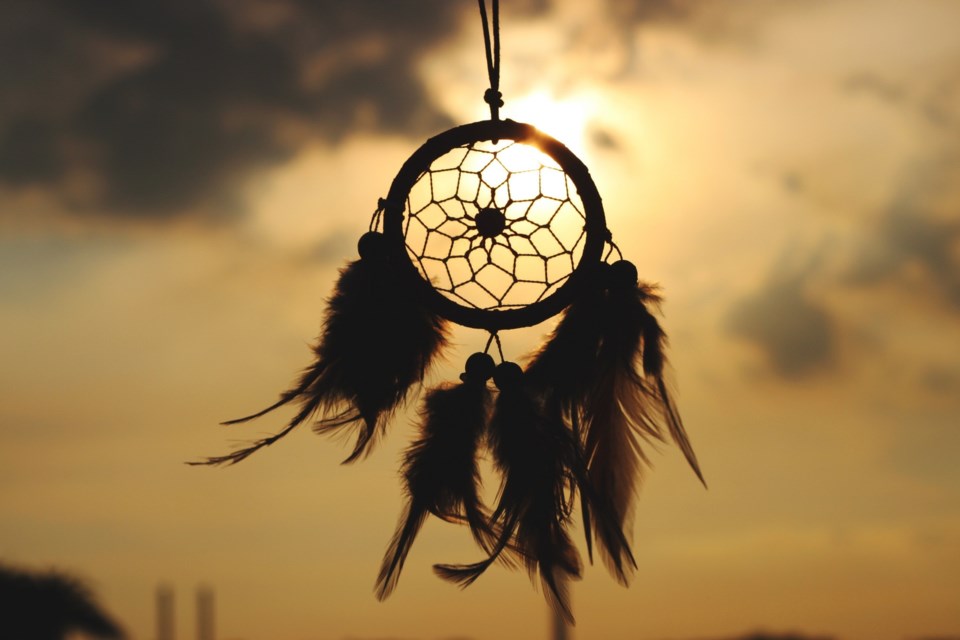On July 1st at 1 p.m., while others may be thinking of Canada Day celebrations, people will rally in the Tom Davies Square courtyard.
Called Coming Together, it is a solidarity rally in line with the call from Indigenous rights organization, Idle No More, to cancel Canada Day in recognition of the ongoing discovery of unmarked graves on the sites of former residential schools.
William Morin, a former University of Sudbury Indigenous Studies professor and Anishinaabek/Ojibway artist is hosting the event along with Myths and Mirrors Community Arts. Morin would like to see Indigenous and non-Indigenous people come together on July 1, not to celebrate Canada Day but instead to listen, to learn and, ultimately, to effect change.
The challenge to celebrating Canada Day is in response to the recent discoveries of remains at now five residential schools: the 215 graves at Kamloops Indian Residential School in British Columbia; 128 graves found at the former St. Eugene’s Mission School outside Cranbrook, B.C.; a confirmed 78, but possible 104, at the Brandon Indian Residential School in Manitoba; and 35 in Lestock, Saskatchewan at the the site of the former residential school known as Muscowequan or Touchwood.
There is also the June 25 announcement of the discovery of as many as 751 unmarked graves near the former site of Marieval Indian Residential School in Saskatchewan, on the lands of Cowessess First Nation.
Not only will Morin be using the rally as a chance to offer words of understanding and condolence to those suffering with the trauma of residential schools and the treatment of Indigenous people since that time, but will wrap his teachings around one of the most identifiable aspects of Indigenous culture, certainly to non-Indigenous Canadians: the dreamcatcher.
Though it is notable that the dreamcatcher contains the fibonacci sequence, to the first people to create a dreamcatcher, “it wasn't about math,” said Morin. “It was about its relationship to nature and all of creation in the pattern that you see. The same pattern in a dream catcher, the fibonacci sequence, can be found on the bottom of a pine cone, or the hat of an acorn and so many other elements in nature.”
A dreamcatcher is what shows the interconnectedness of the land, the animals and the people, and the way to live in harmony with each, while recognizing the importance of each to the whole, he said. But more than that, it is a chance to show the interconnectedness of every human being, non-Indigenous and Indigneous alike.
This is the teaching he will offer on July 1 at the Idle No More Solidarity Rally.
There will be two aspects of Morin’s dreamcatcher teachings at the solidarity rally. One, will be the rebuilding of a dreamcatcher that Morin built for Myths and Mirrors and Better Beginnings, Better Futures in September of 2000.
Almost seven feet in diameter, it was first intended to be a symbol of unity, said Morin.
“A symbol of coming together, a symbol of a place where people can put their dreams.” Over the years, people wrote on little pieces of ribbon and added to the strings of the dreamcatcher, “dreams, hopes, aspirations, wishes.”
The dreamcatcher has often been carried around to other gatherings, rallies and protests, and will be recreated at the rally.
He will also be creating another new dreamcatcher, woven through the people at the event.
It is a teaching he has offered before, one that has the group sit in a circle — now socially distanced, of course — and take the string he places in their hands.
“I would wrap the string around, as they would reach out, they become the hoop on which I weave the dreamcatcher.”
As he weaves, he teaches. “I'm giving a teaching of the medicine wheel, giving the teaching of Turtle Island. I'm giving a teaching of the dreamcatcher, all of those components about our interrelationship to the natural world.”
Once the dreamcatcher is finished, he asks participants to close their eyes. He then tugs on one part of the string. “I ask them, ‘did you feel that,’ and everyone would.”
It is an example that gives a ‘hands on’ awareness of that interconnectedness. “In our history, in our shared history, specifically, we are all connected,” said Morin. “What happens to one people, happens to all people. That's the message I want to convey with this.”
This connection is also shown by the idea of cutting it.
“I cut any one of those strings, the interconnectedness of the dreamcatcher is not only weakened, it crumbles, it falls,” said Morin. “That's where that teaching, the initial basic teaching of our relationship to the natural world, is echoed in the dream catcher.”
It is this lesson, this teaching that Morin hopes attendees at the solidarity rally on July 1. A focus on education, certainly the education of non-indgenous Candadians that Morin said have had this history hidden from them, but also, that the people who live in this country are connected by a shared history, and it is one that should be learned, honoured, and never repeated.
